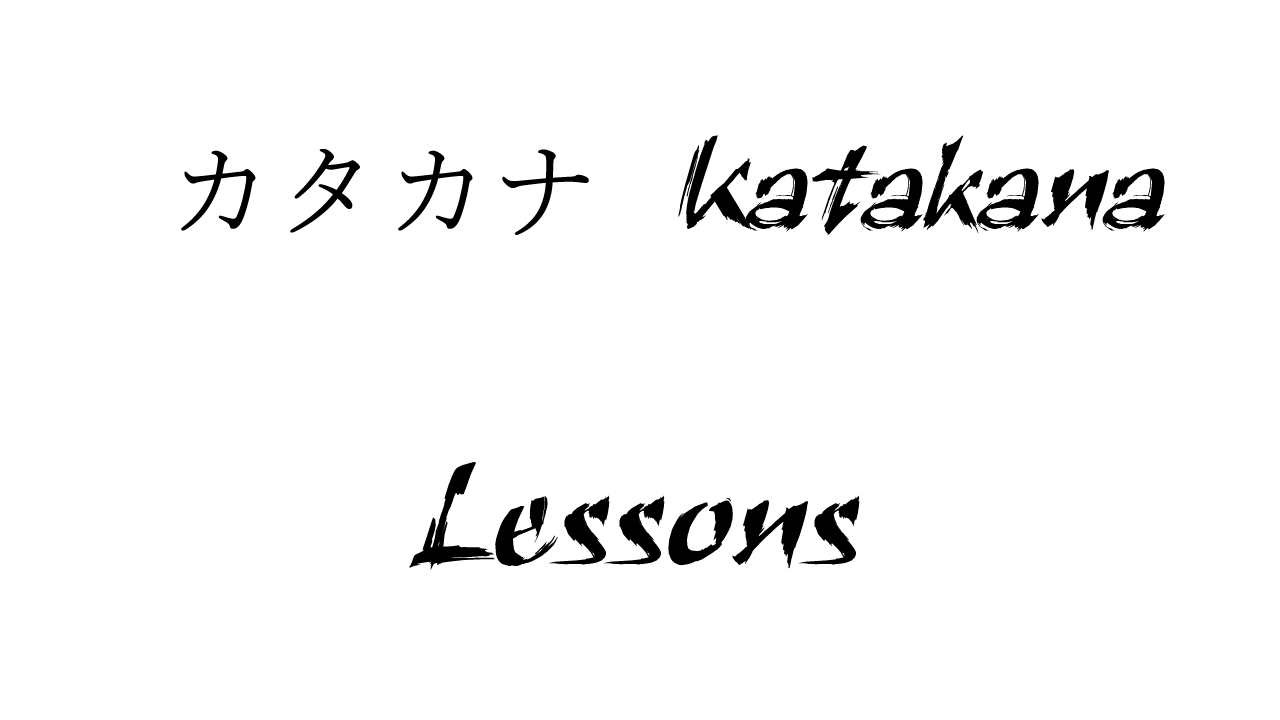Do you want to learn about the Japanese script known as Katakana?
Katakana is a set of symbols that are used as phonetic “alphabet” of sorts in the Japanese language, but only for borrowed words. Unlike Hiragana, Katakana is used for words that originate in other languages. These are the symbols foreigners use to spell out there names as best they can. My name is Hector. You can spell it hekutaru ヘクタル or hekutaa ヘクター. More info on the bar symbol below.
Pronunciation
It’s very important to pronounce katakana correctly. Some people may think since the word originated in another language, they should use the original pronunciation or accent. If you do that, Japanese people may not understand you. For example, you don’t say chocolate you say “chocoreto,” or the shortened form “Choco.” For those English speakers who have never studied Japanese, you may not know which sound to make. Below are some examples:
- A makes an ah sound as in appalled.
- I makes a sound like the letter E.
- U makes a sound like two Os as in goose.
- E makes an eh sound as in egg.
- O makes an oh sound as in okay.
- Ch makes a ch sound as in chocolate.
- R makes an R/L combo sound, similar to the rolling of your tongue in Spanish. You lightly flick the tip of your tongue onto the roof of your mouth.
- Fu actually makes more of a Hu sound, but is always written as Fu.
Each symbol makes their own sound. Some katakana have a Dakuten or Handakuten on the top-right corner. A Dakuten looks like a quotation mark (“), and a Handakuten looks like a degree symbol (°). Adding these to a katakana symbol will slightly change the sound. Not all katakana use Dakuten or Handakuten.
From time to time you may see a small form of tsu ツ. This is called a Sokuon. When you see this, you don’t pronounce it as tsu. You actually make an immediate and brief pause in pronunciation. In romaji, it will actually be two of the same letter that appears after the small tsu. ポッキー is Pocky, which is a popular snack food. If you were saying it, you would pronounce it po (brief pause) kii.
As you may have noticed, there are also bar symbols “ー” in select katakana words. This is called a choonpu, onbiki, or bobiki. It extends the sound of the katakana before it. Two examples were already given with Hector and Pocky. Another example is Picture or Pikuchaa ピクチャー.
Base Forms
Below is a list of all base katakana symbols and the sounds they make. The Dakuten and Handakuten forms are listed to the right of the base forms they alter.
[table “” not found /]Combined Forms
The i forms of each katakana can be added before the ya, yu, and yo katakana to create a new combined form. The ya, yu, and yo katakana will be smaller than usual so readers can recognize it’s a different sound. Below is a list of all these combined forms
[table “” not found /]Other Forms
Some borrowed words need additional sounds that don’t normally appear in the Japanese language. To do this, a smaller form of the vowels (a, i, e, o, u) are placed after the bigger katakana symbol. For example, the name Fiona can be written with a big Fu, a small I, a big O, and a big Na: フィオナ.

